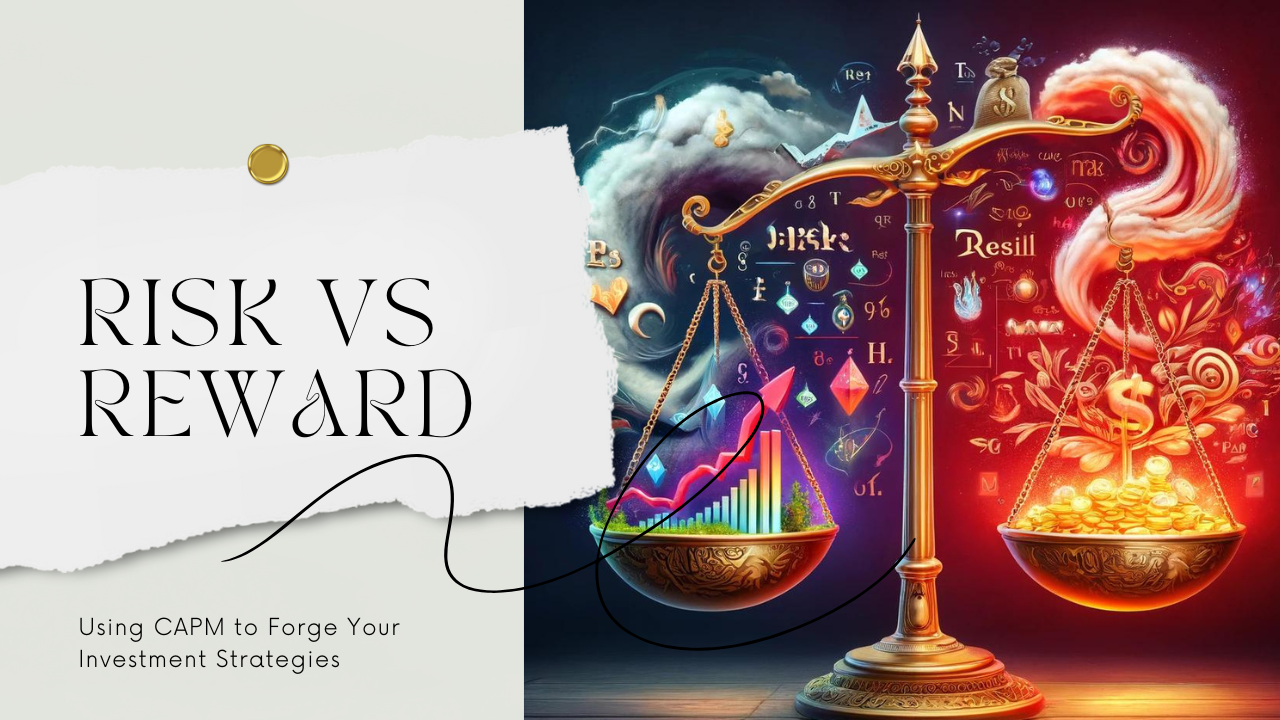
Investing is a delicate dance between the potential risks you face and the rewards you aim for. The Capital Asset Pricing Model (CAPM) offers a robust framework to help navigate this balance effectively, enabling investors to make more informed decisions. This article will explore how CAPM can be leveraged to shape your investment strategies, guiding you from basic understanding to practical application.
Understanding CAPM
CAPM is a financial theory used extensively in the finance world to establish a theoretically appropriate required rate of return of an asset, if that asset is to be included in a well-diversified portfolio, given that asset’s non-diversifiable risk. Here’s a closer look at the formula:
Expected Return = Risk-Free Rate + Beta * (Market Return – Risk-Free Rate)
- Risk-Free Rate: This is what you would expect from a completely safe investment, like government bonds.
- Beta: A measure of how much risk there is in an investment compared to the whole market.
- Market Return: The expected return of the market.
This formula helps you understand what kind of return you should expect on an investment, given the level of risk compared to safe investments.
The Significance of Risk vs. Reward
Understanding the trade-off between risk and reward is crucial for any investor. Higher risks usually come with the potential for higher rewards, but not everyone is comfortable with the possibility of significant losses. CAPM helps by quantifying the risk in relation to the market, allowing investors to make more calculated choices.
Practical Application of CAPM
Let’s apply CAPM to evaluate a potential investment:
Suppose you’re considering investing in a technology firm with a beta of 1.3. Assuming the risk-free rate is 3% and the expected market return is 8%, CAPM would calculate the expected return as follows:
Expected Return = 3% + 1.3 * (8% – 3%) = 9.5%
This 9.5% is your reward for taking on more risk than an absolutely risk-free investment.
CAPM in Real World Scenarios
Consider two companies: TechGiant with a beta of 1.8, and StableUtility with a beta of 0.6. Using CAPM, you can calculate and compare their expected returns to determine which investment aligns better with your risk tolerance and investment goals.
Advanced Insights and Strategies
While CAPM provides a strong base for understanding investment risks and returns, it’s also essential to consider its limitations and how external factors can influence betas and expected returns. Investors should use CAPM as one of several tools in their investment decision-making process.
Common Pitfalls and Misunderstandings
A common misconception about CAPM is that a higher beta always suggests higher returns. However, beta represents the volatility relative to the market, not necessarily the potential for return. It’s crucial to interpret these figures within the broader market and economic context.
Conclusion
CAPM is a powerful tool for investors looking to understand the risk-versus-reward balance in their portfolios. By incorporating CAPM into your investment strategies, you can approach financial decisions with greater confidence and sophistication, aligning your investments with your financial goals and risk tolerance.

